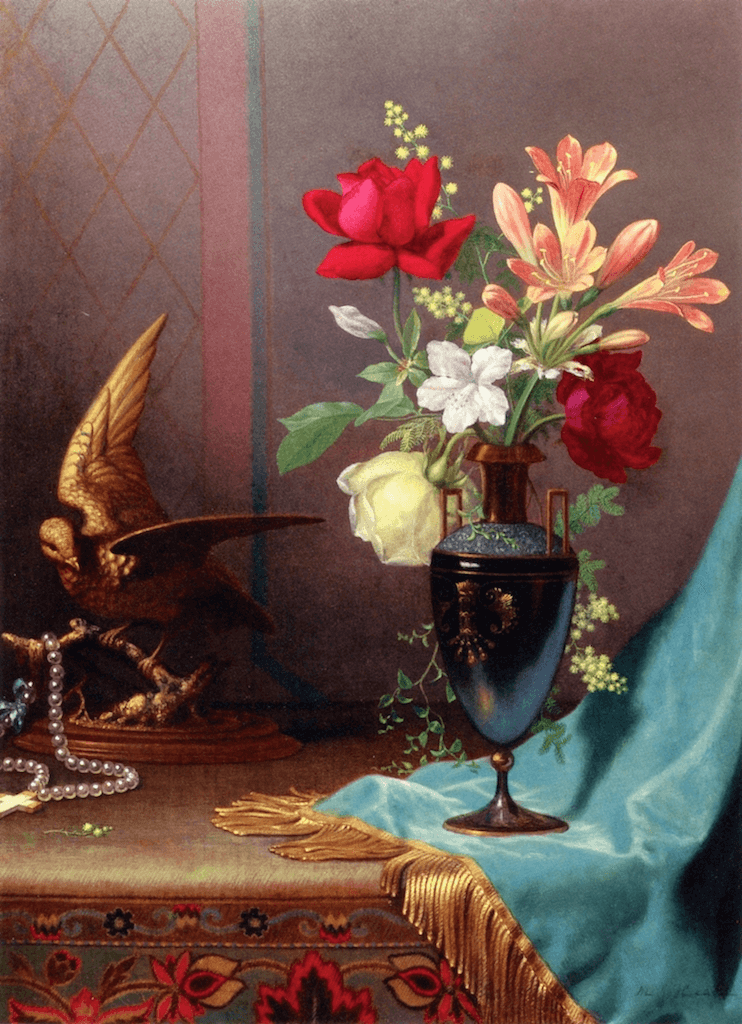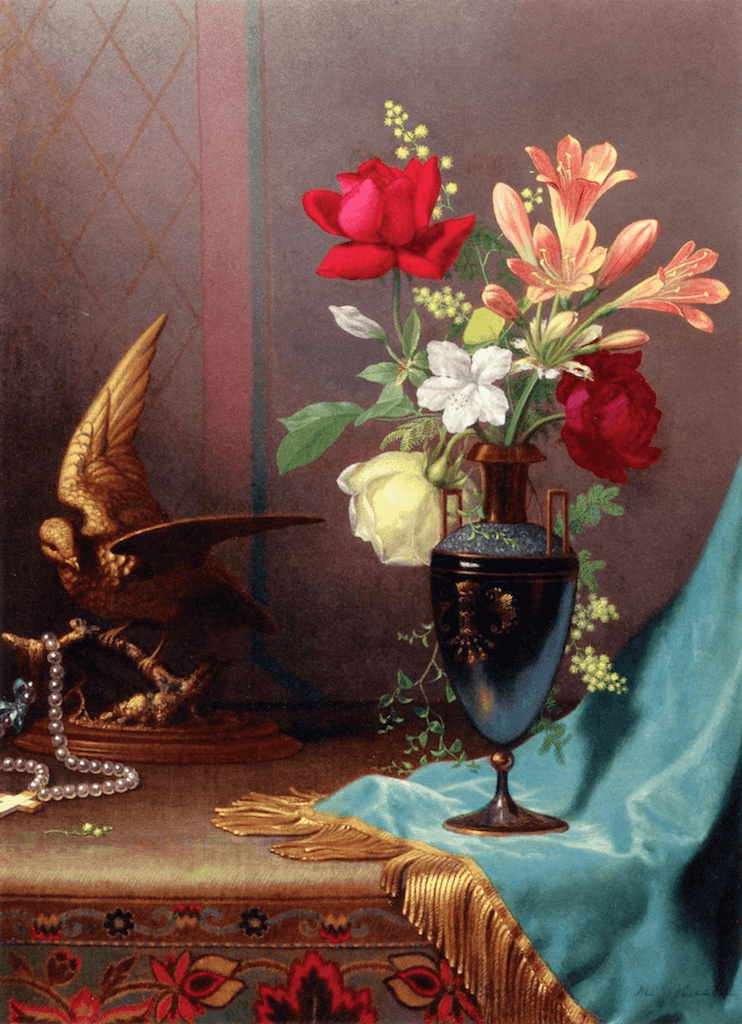
I recently enjoyed an art exhibition at my local library. I saw many wonderful works there, but I noticed that the majority of the pieces I was drawn to were still lives. So I started to think about why that is. Back in the days of the European and American artistic academies, still life was considered the least prestigious of the painting genres, but it’s one of my personal favorites.
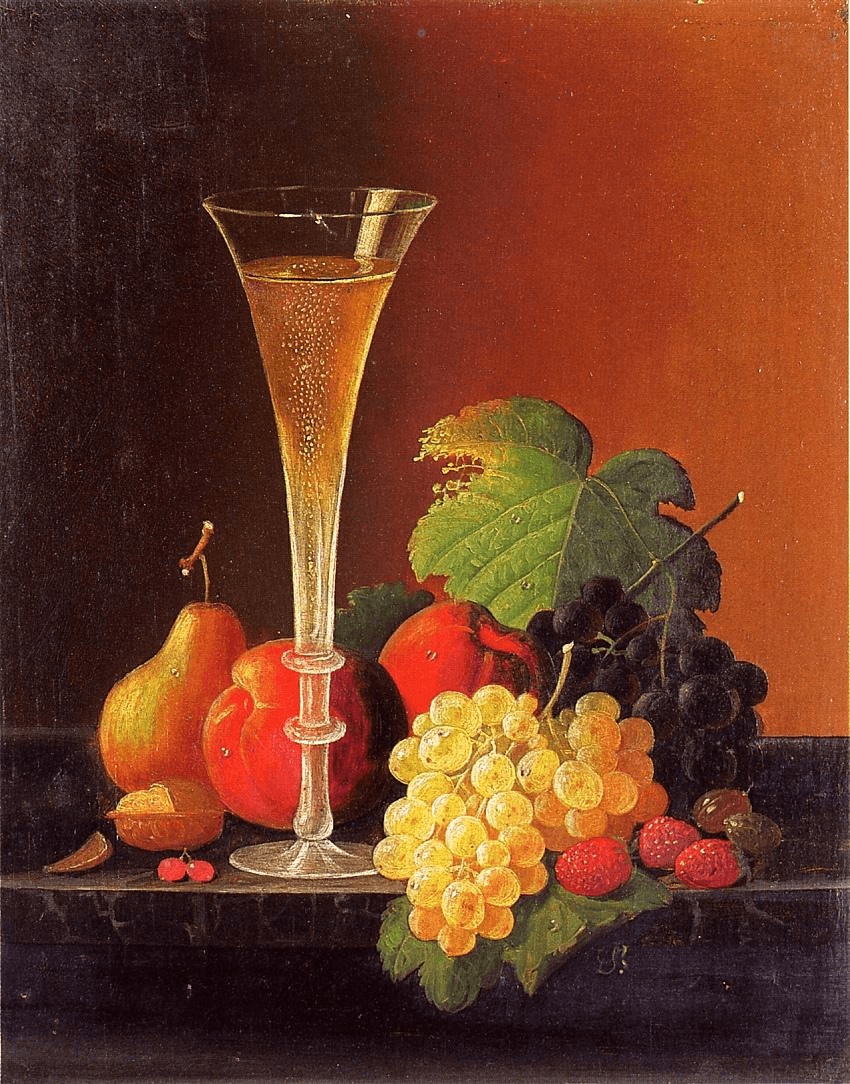
Of all the traditional painting genres, still life is to me the most purely visual, and it appeals to me on a primarily aesthetic level. It is representational, so I do associate what I see with real-life objects and ideas, and artists do often inject symbolism into these works, but I don’t think this is as essential to my experience as it is in other genres. Like no other genre, still life provides the opportunity for artists to play around with color, light, shape, form, texture, pattern, and composition. Objects with different visual attributes can be juxtaposed with each other to explore every so many visual effects in the same painting. Also unlike other genres, I think that all different styles of still life paintings can create equally powerful effects, since it’s neither naturalism nor the lack of it that necessarily creates the compelling whole.
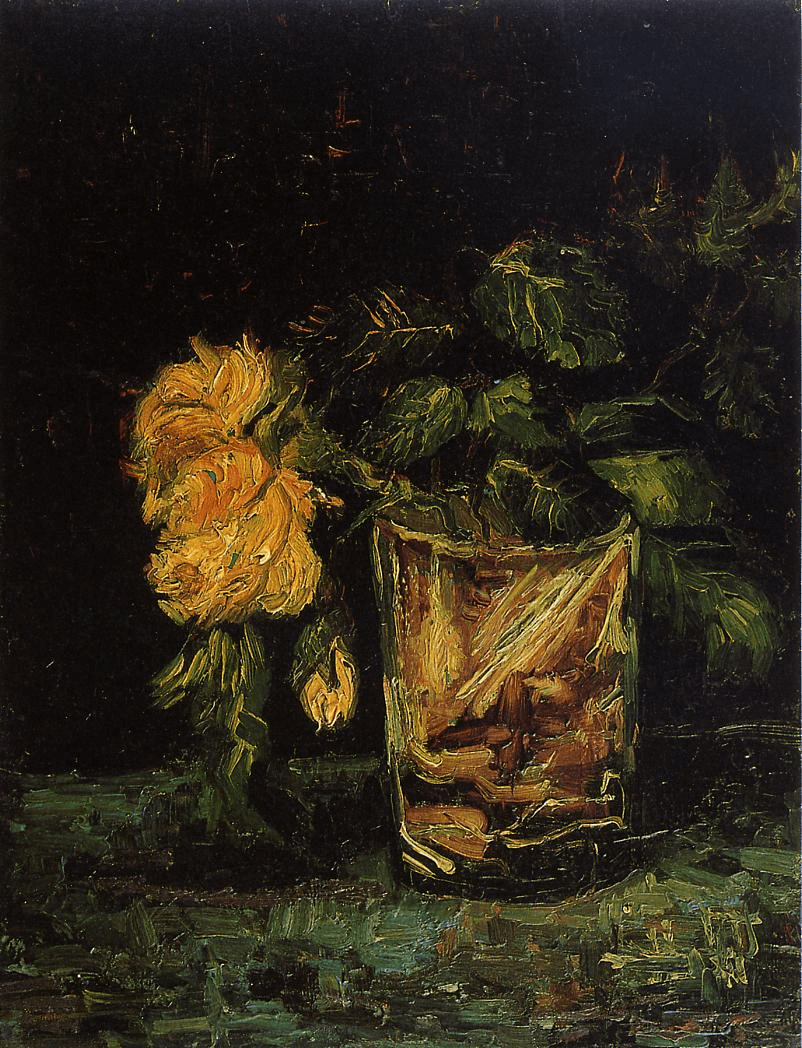
I took a drawing class last summer, and all of our assignments were still life set-ups. The teacher always said that capturing all the different textures – and he would always put several in the same composition – was the most difficult part of a still life. He was right. I know that many still life painters purposely included difficult-to-depict effects like water in a glass or shiny and reflective metal to show their ability to render them believably. In some cases, it can be such a juxtaposition of diverse textures masterfully rendered that draws me to a still life. Other times, I might be more invested in work with soft brushwork that minimizes textural differences but emphasizes contrasts of shape and pattern instead.
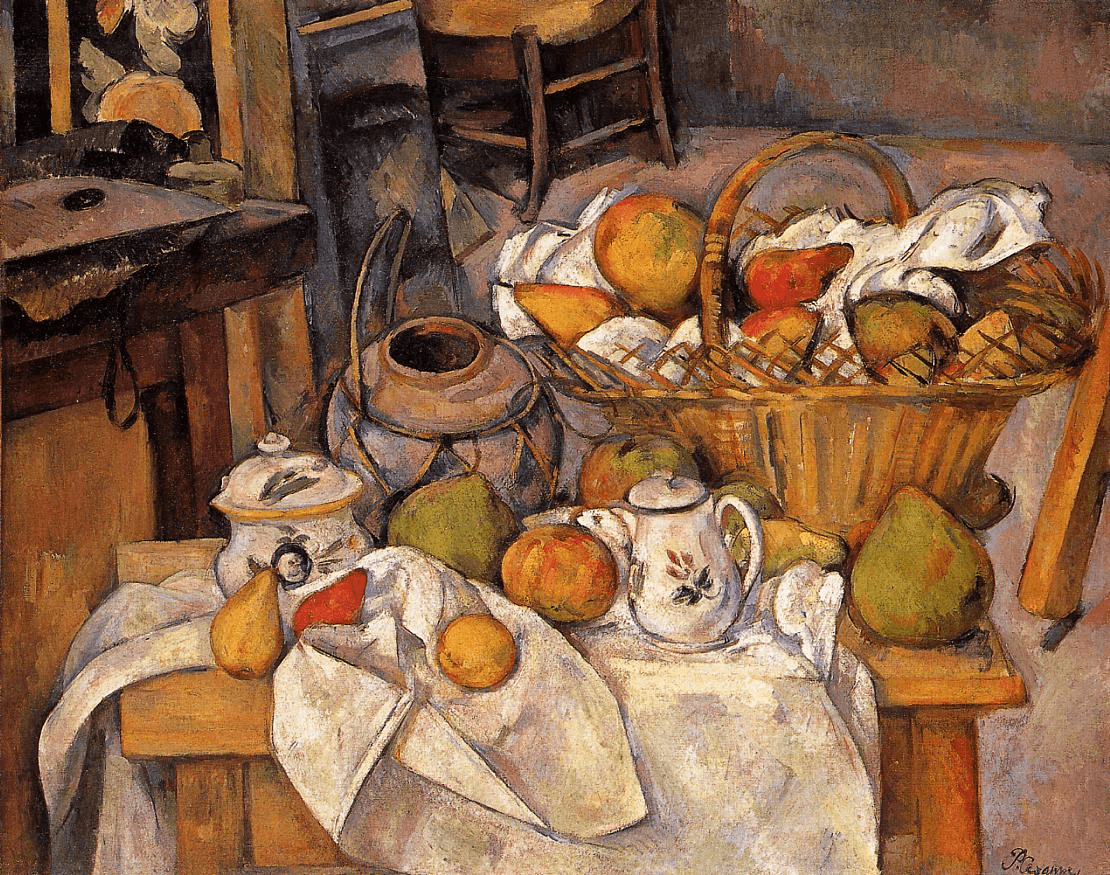
I’ve seen many still life paintings in person. (It would be difficult to be in my line of work and have that not be the case.) But I was particularly taken by the Renoir and Cezanne still lives I saw at the Musée d’Orsay and the Musée d’Orangerie during my 2011 trip to Paris. At that time, I was much more interested in medieval sculpture and architecture than I was in paintings, but even then, these paintings really resonated with me. More recently, I saw a Flemish painting (detail shown below) that included the most spectacular representation of cherries in a bowl. It wasn’t just that the representation was so naturalistic; it was their eye-catching texture, color, and shine. I also love highly-realistic contemporary still lives that show modern objects with bold colors, shapes, and textures. Sill life is timeless and always relevant. We have “stuff” to paint in every era, maybe even more today than in the past, and common subjects like fruit and cheese don’t change that much over time.
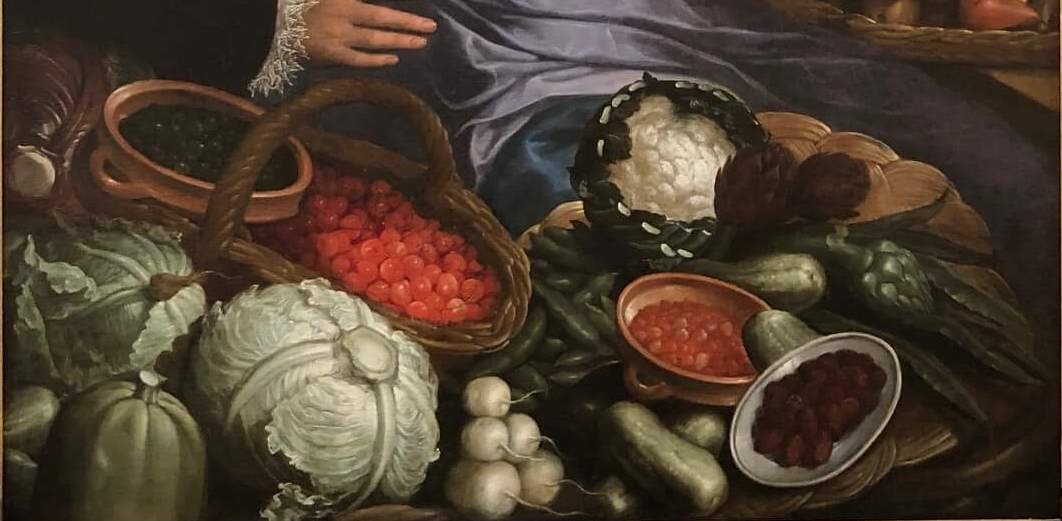
In addition to the beautiful still lives I saw at the library, I came across something more unusual while picking images for this article. Italian photographer Dan Bannino recently did a series of photographs starring celebrities’ fad diets in the style of Baroque still lives. They’re really striking and weird at the same time. I found Bannino through My Modern Met. There are lots of good contemporary still life paintings and photographs out there, and I encourage everyone to find some more favorites for themselves.
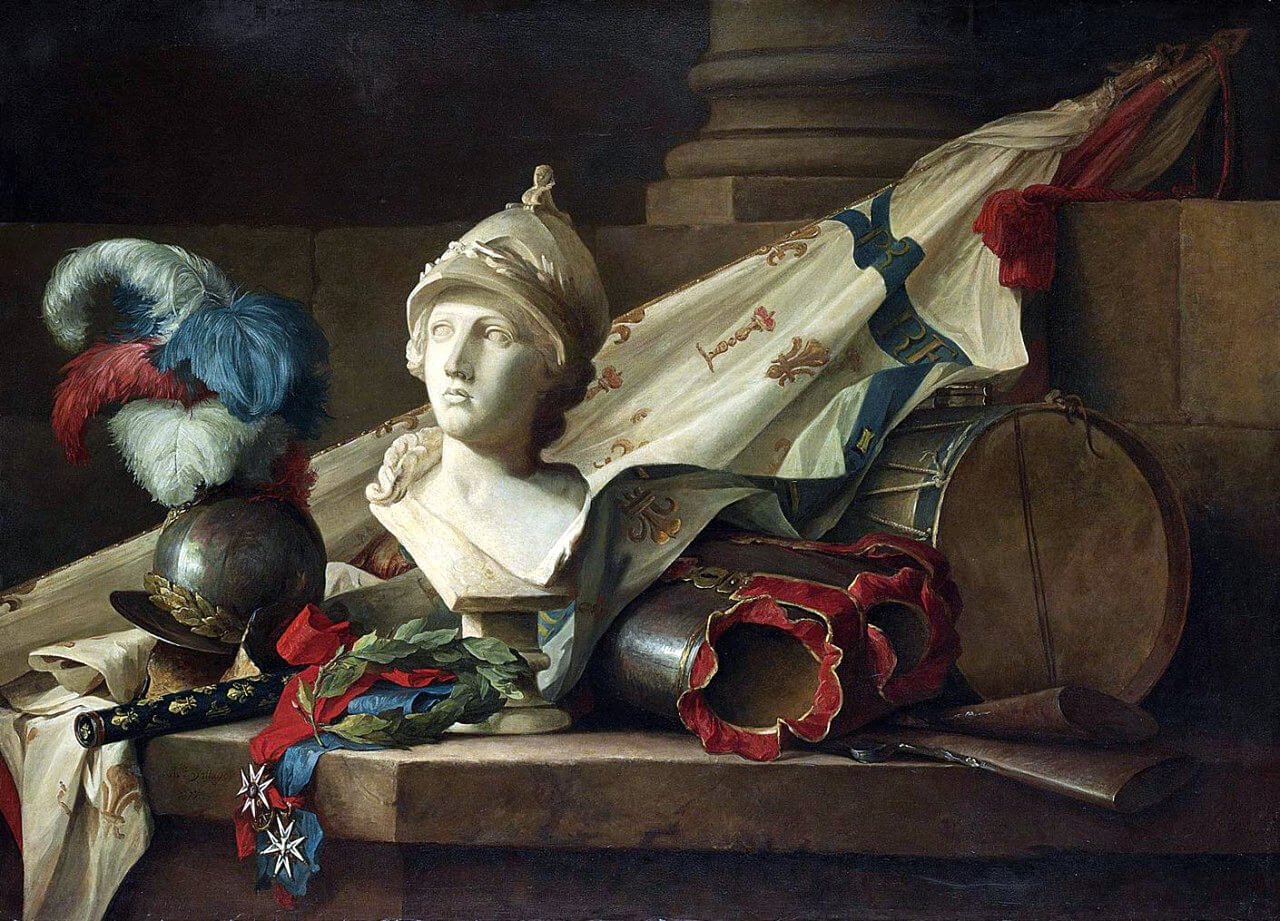
Update 12/19/18: Click here to see gorgeous still lives by female artist Anne Vallayer-Coster.
